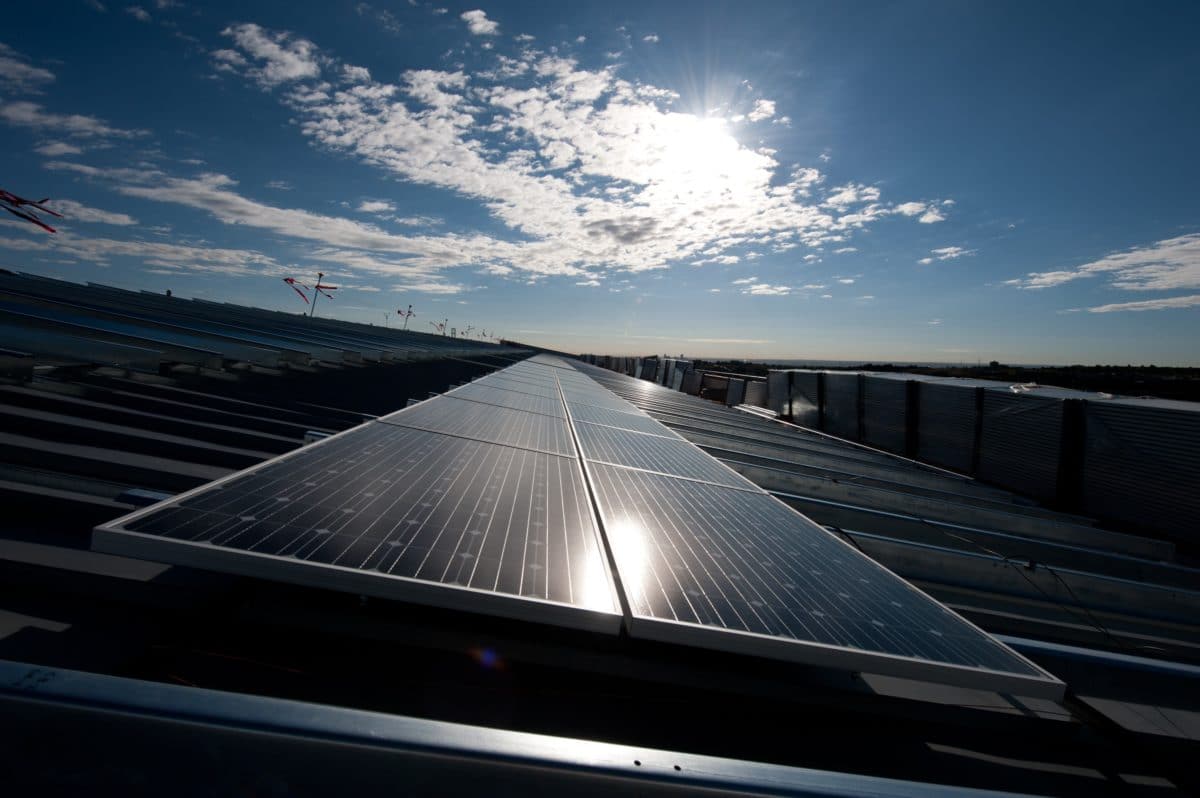SunPower Corp. is closing its solar panel manufacturing plant in Hillsboro, Ore., affecting 170 employees.
“We made the difficult but necessary decision to close our plant after careful evaluation and the change in focus of our business over recent months,” said Tom Werner, CEO and chairman of the board of SunPower. Read the full story here.
From explosives to solar
The site of a former explosives plant in Berkeley County, West Virginia, is slated to be the future home of a $100 million solar electricity facility.
Local officials announced that Colorado-based Torch Clean Energy will build a 100 MW utility-scale solar project at the site.
“Torch is excited to be working with Berkeley County to develop the Bedington Energy Facility,” Torch Clean Energy President Jon Kilberg was quoted as saying in local news reports. “The project will repurpose a former explosives manufacturing site, and — with approximately $100 million invested — will be one of the nation’s largest brownfield renewable energy projects.”
The agreement includes a payment in lieu of taxes, in which Torch Clean Energy agreed to make significant yearly payments based on the number of megawatts generated. The company will also install a 100 kW solar array on a Berkeley County School at no cost to the Berkeley County Board of Education.
Reports said that Berkeley County would be paid $1,850 per megawatt of production capacity, and the developer has offered a $450,000 contribution to the county for “quality of life” initiatives, such as parks and public spaces, public safety and cultural and historical assets.
Water-gel explosives and smokeless powder were manufactured at the site in the 1970s, and ammonia-nitrate fuel-oil explosives were produced in the 1970s and 1980s. Flexible explosives also were manufactured until 1994, when DuPont ceased all explosive-manufacturing operations there.
Plug Power secures investment
New York-based Plug Power Inc. and SK Group, a South Korean business group, are partnering to accelerate hydrogen as an energy source in Asian markets.
As part of the deal, SK Group is making a $1.5 billion investment in Plug Power.
The partners plan to provide hydrogen fuel cell systems, hydrogen fueling stations, and electrolyzers to the Korean and broader Asian markets. A statement said that the combination of SK Group’s presence in Asia’s energy industry and Plug Power’s expertise in hydrogen fuel cell systems, fueling stations and green hydrogen generation “represents a powerful team to accelerate the growth of hydrogen economy in Asian markets.”
Plug Power said it has deployed more than 40,000 fuel cell systems for e-mobility. Its technology and services are used by Amazon, BMW, The Southern Company, Carrefour and Walmart.
PPA for an agrivolt project
French renewable energy developer Valorem has secured a power purchase agreement for a 5 MW agrivoltaic project it is developing in the Dordogne department in southwestern France, reports pv magazine France.
Meanwhile, in the U.S., a researcher at Oregon State University says that using land for both solar photovoltaic power and agriculture could provide 20% of this country’s total electricity generation. Read “Could agrivoltaics feed our demand for clean energy?”
DER testbed
The National Science Foundation awarded $39 million to a team at the University of California San Diego to build a testbed to better understand how to integrate distributed energy sources such as solar panels, wind turbines, smart buildings and electric vehicle batteries into the power grid.
The goal is to make the testbed available to outside research teams and industry by 2025.
“We will be replicating the entire California power grid on one campus,” said Jan Kleissl, the project’s principal investigator.
The testbed will be built upon a number of technical innovations at UC San Diego that create a microgrid encompassing distributed energy resources, including energy storage, electric vehicles and independent electrical and thermal systems in buildings. This distributed system is monitored and controlled by computing and networking systems that make it accessible to local and remote researchers as a programmable platform.
Gary Matthews, vice chancellor resource management and planning for UC San Diego, said “the ability to interact with buildings and change their energy profile intelligently both enhances grid stability and saves a tremendous amount of energy.”
DERConnect will include more than 2,500 distributed energy resources on the campus’ microgrid, with its fuel cell and solar panels, a dozen classroom and office buildings, as well as 300 charging stations for electric vehicles. It will also entail constructing a new energy storage testing facility.
Researchers hope to be able to begin testing their equipment in 2022. Industry partners include Johnson Controls and Sunspec Alliance.
This content is protected by copyright and may not be reused. If you want to cooperate with us and would like to reuse some of our content, please contact: editors@pv-magazine.com.









By submitting this form you agree to pv magazine using your data for the purposes of publishing your comment.
Your personal data will only be disclosed or otherwise transmitted to third parties for the purposes of spam filtering or if this is necessary for technical maintenance of the website. Any other transfer to third parties will not take place unless this is justified on the basis of applicable data protection regulations or if pv magazine is legally obliged to do so.
You may revoke this consent at any time with effect for the future, in which case your personal data will be deleted immediately. Otherwise, your data will be deleted if pv magazine has processed your request or the purpose of data storage is fulfilled.
Further information on data privacy can be found in our Data Protection Policy.